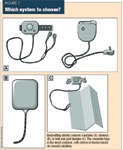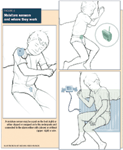Strategies for success with an enuresis alarm
Here are practical solutions to 10 common problems encountered by children and parents using an enuresis alarm.
DR. BENNETT is a clinical professor of pediatrics at the George Washington School of Medicine. He is the author of Waking Up Dry: A Guide to Help Children Overcome Bedwetting, published by the American Academy of Pediatrics. He is also the author of a recently published picture book for children, Lions Aren't Scared of Shots, published by Magination Press.
The author has nothing else to disclose in regard to affiliations with, or financial interests in, any organization that may have an interest in any part of this article.

Problem #1
The alarm fails to awaken the child
During the first days or even weeks of treatment with an enuresis alarm, a child may not awaken to even the most piercing alarm. Although this problem typically improves, parents initially must be prepared to wake the child and make sure he is sufficiently awake to go to the bathroom and cooperate with a change of bedclothes before going back to sleep.1
I request that, if possible, one parent sleep in the child's room for one or two weeks at the beginning of treatment, to help the child awaken promptly to the alarm. I advise parents who are unable to sleep in the child's room to use a baby monitor or intercom to make sure they hear the alarm and quickly get to the child's room.
Problem #2
The alarm fails

A snap-on sensor is more likely to loosen from the underpants during the night than one attached by a clip, often because the underpants are too thick, as with the double-thickness crotch common in girls' underwear (see Figure 2). If the snap-on sensor itself becomes loose, try pushing the "female" end of the fastener together. If these measures fail to correct the problem, I instruct parents to investigate less common causes of alarm failure, such as a weak battery, dirt on the sensor, or alarm malfunction. If all else fails, have the parent ask the manufacturer to replace the device (see the table).